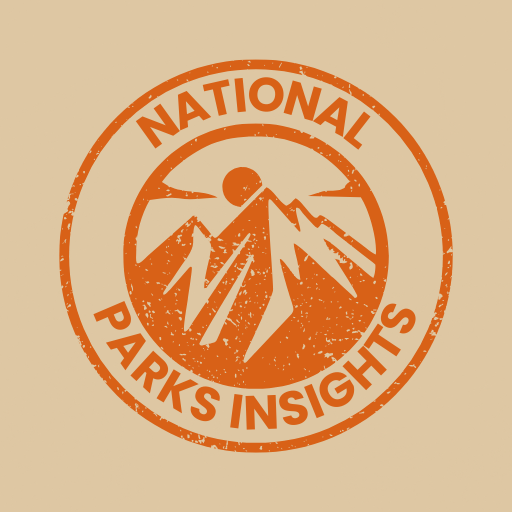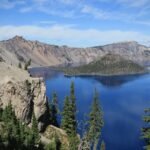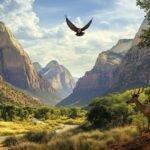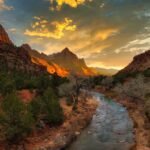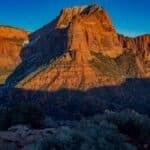Discover National Parks in Wyoming
Wyoming is home to some of the most jaw-dropping national parks in the U.S. From the majestic peaks of the Teton Range to the bubbling wonders of Yellowstone, these parks are a playground for adventure and discovery.
Grand Teton National Park

Just a quick 10-mile hop from Jackson Hole, Grand Teton National Park is a dream come true for outdoor lovers. With its stunning views, miles of trails, crystal-clear alpine lakes, and unique rock formations, this park is a gem. The Teton Range, teeming with wildlife and serene lakes, has been captivating humans for over 11,000 years.
Must-See Spots:
- Hiking and Trails: Over 200 miles of trails wind through meadows and up rugged peaks. Perfect for a day hike or a multi-day trek.
- Wildlife Encounters: Spot moose, elk, bison, and maybe even a bear as you explore.
- Winter Fun: When snow blankets the park, it’s time for snowshoeing and cross-country skiing.
| Feature | Details |
|---|---|
| Location | 10 miles from Jackson Hole |
| Established | February 26, 1929 |
| Area | 310,000 acres |
| Activities | Hiking, wildlife viewing, winter sports |
Need more info on planning your trip? Check out our Planning Your Visit section for lodging tips and more.
Yellowstone National Park

Yellowstone, the granddaddy of national parks, was established on March 1, 1872. Spanning 2.2 million acres, it’s packed with unique hydrothermal and geological features. From the vibrant geothermal pools to the iconic Old Faithful geyser, Yellowstone is a nature lover’s paradise.
Must-See Spots:
- Geothermal Areas: Home to about half of the world’s active geysers, including Old Faithful and the Grand Prismatic Spring.
- Wildlife Watching: Yellowstone is a prime spot to see bison, wolves, grizzly bears, and more in their natural habitat.
- Geologic Wonders: The Grand Canyon of the Yellowstone River is a must-see, with its stunning waterfalls and colorful rock formations.
| Feature | Details |
|---|---|
| Location | Wyoming, Montana, Idaho |
| Established | March 1, 1872 |
| Area | 2.2 million acres |
| Activities | Geothermal exploration, wildlife watching, hiking |
Want to explore more parks? Check out our guides to national parks in Utah, national parks in California, and national parks in Arizona.
Visiting Wyoming’s national parks is like stepping into a postcard. Whether you’re hiking the rugged trails of Grand Teton or marveling at Yellowstone’s geothermal wonders, these parks offer unforgettable experiences for every nature enthusiast.
Unique Geological Features
Wyoming’s national parks are like nature’s playground, packed with jaw-dropping geological wonders. Whether you’re a rock nerd or just love a good hike, Grand Teton and Yellowstone National Parks have got some serious eye candy.
Rock Stars of Grand Teton
Grand Teton National Park is a rock lover’s paradise. The park’s sedimentary rocks are like pages in Earth’s history book, each layer telling a different story. You’ve got limestone, sandstone, and shale, all adding their own flair to the scenery.
| Rock Type | What’s Cool About It |
|---|---|
| Limestone | Made from ancient sea creatures, giving the peaks their rugged look. |
| Sandstone | Formed from old sand dunes, adding texture to the cliffs. |
| Shale | Squished mud and clay, laying the groundwork for the valleys. |
When you’re in Grand Teton, hit the trails to get up close and personal with these rock stars. And seriously, bring your camera—those views of the Teton Range are Instagram gold.
Click here for more information on National Parks
Yellowstone’s Hot Stuff
Yellowstone National Park is sitting on a sleeping volcano, making it a hotspot for geothermal action. With about half of the world’s hydrothermal features, this place is like nature’s science lab. Think geysers, hot springs, mudpots, and steam vents.
Old Faithful is the headliner here, famous for its regular eruptions. But don’t stop there. The park is dotted with colorful hot springs and stunning waterfalls, making it a must-see for anyone who loves the great outdoors.
| Feature | What’s Cool About It |
|---|---|
| Geysers | Like Old Faithful, these water explosions are a must-see. |
| Hot Springs | Brightly colored pools thanks to mineral deposits. |
| Mudpots | Bubbling mud pools, courtesy of volcanic gases. |
| Fumaroles | Steam vents that hiss and spit from the ground. |
Exploring Yellowstone’s geothermal wonders feels like stepping into another planet. The park’s varied landscape makes it perfect for family trips, offering something for everyone, from the little ones to the grandparents.
For more cool parks, check out our articles on national parks in Utah, national parks in California, and national parks in Arizona.
Visiting these geological gems will give you a whole new appreciation for Wyoming’s natural beauty. Whether you’re trekking through the rock layers of Grand Teton or gawking at Yellowstone’s geothermal spectacles, you’re in for an adventure you won’t forget.
Other National Monuments in Wyoming
Wyoming’s got some jaw-dropping national monuments that are perfect for anyone who loves nature and history. Let’s talk about two spots you absolutely can’t miss: Devils Tower and Fossil Butte.
Devils Tower National Monument

Devils Tower, sitting pretty in northeast Wyoming, is a massive rock formation that shoots up from the prairie like something out of a sci-fi movie. It’s famous for its hundreds of parallel cracks, making it a top spot for crack climbing in North America. Plus, it’s a sacred site for Northern Plains Indians and indigenous folks.
Here’s what you can do there:
- Hiking: Take a stroll around the base on the Tower Trail, a 1.3-mile loop with killer views.
- Climbing: If you’re into rock climbing, this place is your playground.
- Picnicking: Chill out and have a meal at one of the picnic spots with a view.
The monument is open all day, every day, and the Visitor Center has loads of info about the tower’s geological and cultural importance.
| Activity | Details |
|---|---|
| Hiking | 1.3-mile loop trail |
| Climbing | Top crack climbing area |
| Picnicking | Several picnic spots available |
Want to explore more? Check out our guides on national parks in Utah and national parks in Colorado.
Fossil Butte National Monument

Fossil Butte, near Kemmerer in southwestern Wyoming, is like a time capsule full of ancient life. This place is packed with some of the best-preserved fossils on the planet. Think fish, insects, plants, reptiles, birds, and even mammals, all from a time when the area was a warm, wet paradise around a freshwater lake.
Here’s what you can do:
- Fossil Viewing: The Visitor Center has exhibits with stunning fossils.
- Hiking: Check out the Fossil Lake Trail and the Historic Quarry Trail to get up close with the monument’s geology.
- Educational Programs: Join ranger-led programs and watch fossil prep demos.
| Activity | Details |
|---|---|
| Fossil Viewing | Exhibits at the Visitor Center |
| Hiking | Fossil Lake Trail, Historic Quarry Trail |
| Educational Programs | Ranger-led programs, fossil prep demos |
Curious about more geological wonders? Dive into our articles on national parks in New Mexico and national parks in Washington.
These Wyoming monuments offer a peek into the past and a chance to connect with nature. Whether you’re hiking, climbing, or just geeking out over fossils, these spots will blow your mind.
Historical Sites and Recreational Areas
Wyoming isn’t just about stunning national parks; it’s also packed with historical gems and outdoor fun spots. These places let you peek into the past while having a blast in nature.
Fort Laramie National Historic Site
Fort Laramie National Historic Site, tucked away in southeast Wyoming, is a history buff’s dream. It started as a fur trading post in 1834 and later turned into a major military hub on the Northern Plains. Fort Laramie was a big deal during America’s westward expansion and saw plenty of action during the Indian resistance.
| Feature | Details |
|---|---|
| Established | 1834 (as a trading post) |
| Military Post | Largest on Northern Plains |
| Abandoned | 1890 |
| Significance | Western expansion, Indian resistance |
At Fort Laramie, you can wander through restored buildings and exhibits that bring the fort’s history to life. Guided tours are available if you want the full scoop. The fort’s spot on the map made it crucial for westward migration and military moves. For more cool historical spots, check out national parks in Montana.
Bighorn Canyon National Recreation Area
Bighorn Canyon National Recreation Area is a paradise for outdoor lovers. Stretching across Wyoming and Montana, it’s the perfect place for hiking, camping, fishing, and boating.
| Feature | Details |
|---|---|
| Location | Wyoming & Montana |
| Primary Activities | Hiking, camping, fishing, boating |
| Notable Sites | Bighorn Lake, Devil Canyon Overlook |
| Wildlife | Bighorn sheep, wild horses, bald eagles |
Bighorn Canyon boasts Bighorn Lake, a 70-mile-long reservoir ideal for water fun. The dramatic canyons and cliffs offer jaw-dropping views, with Devil Canyon Overlook being a must-see. The area is teeming with wildlife, including bighorn sheep, wild horses, and bald eagles. For more outdoor adventures, visit national parks in Colorado.
Both Fort Laramie and Bighorn Canyon serve up unique experiences that blend history and nature. Whether you’re into exploring the past or diving into outdoor activities, these spots have got you covered. For more travel ideas, check out national parks in Utah and national parks in California.
Planning Your Visit
Exploring Wyoming’s national parks is a thrilling adventure, but a bit of planning can make your trip unforgettable. Here, you’ll find info on where to stay and some handy tips for booking your spot.
Where to Stay
Wyoming’s national parks have a range of places to crash, fitting different tastes and wallets. Whether you’re into roughing it under the stars or chilling in a comfy lodge, there’s something for everyone.
| Type of Stay | What You Get | Example Spots |
|---|---|---|
| Campgrounds | Basic amenities, perfect for nature lovers. | Madison Campground (Yellowstone), Colter Bay Campground (Grand Teton) |
| Lodges | Cozy rooms with modern comforts. | Old Faithful Inn (Yellowstone), Jackson Lake Lodge (Grand Teton) |
| Cabins | Rustic vibes with the essentials. | Roosevelt Lodge Cabins (Yellowstone), Signal Mountain Lodge (Grand Teton) |
| Hotels | Full-service stays with extra perks. | Mountain Modern (near Yellowstone) |
Camping in the parks can be a blast, but remember, most campgrounds need reservations and fill up fast. If you’re after more comfort, lodges and hotels are a great pick. Staying at Mountain Modern puts you just 55 miles from Yellowstone’s South entrance, making it a perfect base for your adventures.
Booking Tips
Planning ahead is key when visiting popular spots like Yellowstone and Grand Teton. Here are some tips to help you snag your accommodations and have a smooth trip:
- Book Early: Places in and around the parks get booked up quickly, especially during peak times. Reserve your spot as soon as you can.
- Check Availability: Use the official park websites or reservation platforms to see what’s open and book your stay.
- Be Flexible: If your top choice is full, look at different dates or nearby places.
- Consider Off-Peak Times: Visiting during quieter times can help you get reservations and enjoy a more peaceful trip.
- Pack Essentials: Don’t forget important stuff like a heat protectant spray if you plan on styling your hair, along with other outdoor must-haves.
For more tips on planning trips to other national parks, check out our guides on national parks in Utah and national parks in California.
By planning ahead and being prepared, you can make the most of your visit to Wyoming’s stunning national parks. Enjoy the jaw-dropping views, unique geological wonders, and amazing wildlife these parks have to offer.
Protecting the Parks
Keeping Wyoming’s national parks in tip-top shape for future generations is something we all need to pitch in on. Knowing how to protect these beautiful spots not only makes your visit better but also helps keep them around for years to come.
Aquatic Invaders
Aquatic invaders are a real problem for Wyoming’s national parks, especially Yellowstone. These pesky species can mess up the natural balance, causing long-term harm to the local plants and animals.
If you’re planning to boat or fish, make sure you follow these park rules to stop the spread of these invaders:
- Before hitting the water, clean, drain, and dry your boat and fishing gear.
- Stick to approved, non-invasive bait.
- Get rid of any plant bits and mud from your gear before moving to another lake or river.
Here’s a quick rundown:
| Action | What to Do |
|---|---|
| Clean | Remove all plant material and mud from your boat and equipment. |
| Drain | Empty water from all compartments and containers. |
| Dry | Make sure your gear is completely dry before moving to another water body. |
Doing this helps protect the local wildlife and keeps the park’s waters pristine. For more details, check out the park’s official resources on aquatic invasive species prevention.
Mobile Apps and Podcasts
Making the most of your park visit is a breeze with mobile apps and podcasts. Yellowstone National Park has its own app packed with useful info.
What you get with the Yellowstone app:
- Interactive maps
- Real-time updates on park conditions
- Info on wildlife sightings
- Educational content about the park’s geology and history
Using the app helps you plan your trip better, so you don’t miss out on must-see spots like the Yellowstone Grand Canyon and the amazing wildlife, including the largest buffalo herd in the U.S., grizzly bears, and wolves.
Podcasts are another great way to learn about the parks. They dive into the park’s history, geology, and conservation efforts, making your visit even more interesting. Whether you’re hiking, camping, or just exploring, these digital tools can give you valuable insights and deepen your connection to the environment.
For more tips on planning your visit, including where to stay and how to make reservations, check out our section on Planning Your Visit.
By staying informed and taking action, you can help keep Wyoming’s national parks beautiful for years to come. For more info on other national parks across the USA, check out our articles on national parks in Utah and national parks in California.
Hidden Gems of Wyoming
Wyoming’s got more than just its famous national parks. If you’re up for some adventure, check out Wind River Canyon and Hell’s Half Acre. These spots are perfect for anyone who loves the great outdoors.
Wind River Canyon

Wind River Canyon is a must-see if you’re exploring Wyoming. This canyon’s got some seriously old rocks—like, 2.9 billion years old. It’s a tight squeeze with just enough room for the highway, river, and railroad track.
| Feature | Description |
|---|---|
| Location | Wyoming |
| Age of Rocks | 2.9 billion years |
| Activities | Driving, sightseeing, photography |
Driving through Wind River Canyon is like taking a trip back in time. The ancient rock formations and narrow passage make for some epic views. Whether you’re cruising through or stopping to snap some pics, this place is a real showstopper.
Hell’s Half Acre

Hell’s Half Acre sits between Casper and Shoshoni and looks like something from another planet. The badlands topography here is shaped by erosion, creating wild rock formations. It’s a dream for hikers and wildlife watchers.
| Feature | Description |
|---|---|
| Location | Between Casper and Shoshoni, Wyoming |
| Topography | Badlands |
| Activities | Hiking, wildlife viewing, photography |
Hell’s Half Acre is a feast for the eyes. The eroded rocks make for some crazy cool scenery, perfect for hiking and exploring. And don’t forget to keep an eye out for the local critters as you wander the trails.
Want more adventure? Check out our articles on national parks in Utah, national parks in California, and national parks in Colorado. Each spot has its own unique wonders and outdoor fun.
Native Connections and Park Origins
Native Tribes’ Connections
Wyoming’s national parks, especially Yellowstone, are steeped in Native American heritage. Long before Yellowstone became a national park, at least 27 federally-recognized Native tribes had strong ties to this area. Some tribes lived here year-round, while others passed through for trade, food, and ceremonies. The park was a goldmine for obsidian, with over 50 ancient quarry sites found within its borders.
These tribes include:
- Shoshone
- Crow
- Blackfeet
- Bannock
- Nez Perce
- Umatilla
Knowing these connections adds a rich layer to your visit. The land is more than just beautiful scenery; it’s a living history book filled with stories and traditions that go back centuries.
Establishment and Inspiration
Yellowstone National Park, founded in 1872, holds the title of the world’s first national park. The goal was to save the land for future generations to enjoy. This idea of public access and nature conservation started to catch on in America. Yellowstone’s creation inspired the establishment of other national parks in the U.S. and around the world.
John Colter, a former member of the Lewis and Clark Expedition, was the first non-Native to visit Yellowstone in the winter of 1807-1808. He was there for trapping and fur trading. The first organized expeditions began in 1869, and the idea of a national park took shape during the Washburn-Doane Expedition of 1870. The natural wonders they saw sparked the movement to protect this unique area.
Here’s a quick look at key moments in Yellowstone’s history:
| Year | Event |
|---|---|
| 1807-1808 | John Colter explores Yellowstone |
| 1869 | First organized expedition to Yellowstone |
| 1870 | Washburn-Doane Expedition, idea of a national park arises |
| 1872 | Yellowstone National Park established |
When you visit these parks, you’re not just seeing stunning landscapes; you’re connecting with a legacy of conservation and a deep appreciation for nature. Curious about other parks? Check out national parks in Utah, national parks in California, and national parks in Arizona.
